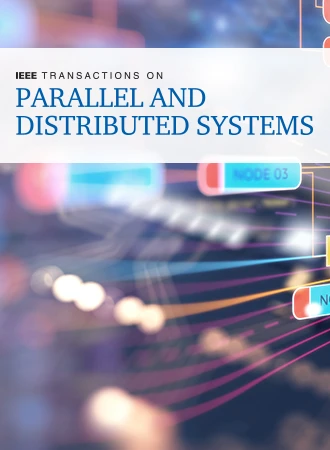Gamora: Learning-Based Buffer-Aware Preloading for Adaptive Short Video Streaming
IF 5.6
2区 计算机科学
Q1 COMPUTER SCIENCE, THEORY & METHODS
IEEE Transactions on Parallel and Distributed Systems
Pub Date : 2024-09-09
DOI:10.1109/TPDS.2024.3456567
引用次数: 0
Abstract
Nowadays, the emerging short video streaming applications have gained substantial attention. With the rapidly burgeoning demand for short video streaming services, maximizing their Quality of Experience (QoE) is an onerous challenge. Current video preloading algorithms cannot determine video preloading sequence decisions appropriately due to the impact of users’ swipes and bandwidth fluctuations. As a result, it is still ambiguous how to improve the overall QoE while mitigating bandwidth wastage to optimize short video streaming services. In this article, we devise Gamora, a buffer-aware short video streaming system to provide a high QoE of users. In Gamora, we first propose an unordered preloading algorithm that utilizes a Deep Reinforcement Learning (DRL) algorithm to make video preloading decisions. Then, we further devise an Asymmetric Imitation Learning (AIL) algorithm to guide the DRL-based preloading algorithm, which enables the agent to learn from expert demonstrations for fast convergence. Finally, we implement our proposed short video streaming system prototype and evaluate the performance of Gamora on various real-world network datasets. Our results demonstrate that Gamora significantly achieves QoE improvement by 28.7%–51.4% compared to state-of-the-art algorithms, while mitigating bandwidth wastage by 40.7%–83.2% without sacrificing video quality.卡魔拉基于学习的缓冲区感知预加载,实现自适应短视频流
如今,新兴的短视频流应用已受到广泛关注。随着短视频流服务需求的快速增长,如何最大限度地提高其体验质量(QoE)成为一项艰巨的挑战。由于用户刷卡和带宽波动的影响,当前的视频预加载算法无法正确确定视频预加载顺序决策。因此,如何在改善整体 QoE 的同时减少带宽浪费以优化短视频流媒体服务仍是一个模糊的问题。在本文中,我们设计了一种缓冲感知短视频流系统 Gamora,为用户提供高 QoE。在 Gamora 中,我们首先提出了一种无序预加载算法,利用深度强化学习(DRL)算法做出视频预加载决策。然后,我们进一步设计了一种非对称模仿学习(AIL)算法来指导基于 DRL 的预加载算法,使代理能够从专家示范中学习,从而快速收敛。最后,我们实现了所提出的短视频流系统原型,并在各种实际网络数据集上评估了 Gamora 的性能。结果表明,与最先进的算法相比,Gamora 的 QoE 显著提高了 28.7%-51.4%,同时在不牺牲视频质量的情况下减少了 40.7%-83.2% 的带宽浪费。
本文章由计算机程序翻译,如有差异,请以英文原文为准。
求助全文
约1分钟内获得全文
求助全文
来源期刊

IEEE Transactions on Parallel and Distributed Systems
工程技术-工程:电子与电气
CiteScore
11.00
自引率
9.40%
发文量
281
审稿时长
5.6 months
期刊介绍:
IEEE Transactions on Parallel and Distributed Systems (TPDS) is published monthly. It publishes a range of papers, comments on previously published papers, and survey articles that deal with the parallel and distributed systems research areas of current importance to our readers. Particular areas of interest include, but are not limited to:
a) Parallel and distributed algorithms, focusing on topics such as: models of computation; numerical, combinatorial, and data-intensive parallel algorithms, scalability of algorithms and data structures for parallel and distributed systems, communication and synchronization protocols, network algorithms, scheduling, and load balancing.
b) Applications of parallel and distributed computing, including computational and data-enabled science and engineering, big data applications, parallel crowd sourcing, large-scale social network analysis, management of big data, cloud and grid computing, scientific and biomedical applications, mobile computing, and cyber-physical systems.
c) Parallel and distributed architectures, including architectures for instruction-level and thread-level parallelism; design, analysis, implementation, fault resilience and performance measurements of multiple-processor systems; multicore processors, heterogeneous many-core systems; petascale and exascale systems designs; novel big data architectures; special purpose architectures, including graphics processors, signal processors, network processors, media accelerators, and other special purpose processors and accelerators; impact of technology on architecture; network and interconnect architectures; parallel I/O and storage systems; architecture of the memory hierarchy; power-efficient and green computing architectures; dependable architectures; and performance modeling and evaluation.
d) Parallel and distributed software, including parallel and multicore programming languages and compilers, runtime systems, operating systems, Internet computing and web services, resource management including green computing, middleware for grids, clouds, and data centers, libraries, performance modeling and evaluation, parallel programming paradigms, and programming environments and tools.
 求助内容:
求助内容: 应助结果提醒方式:
应助结果提醒方式:


